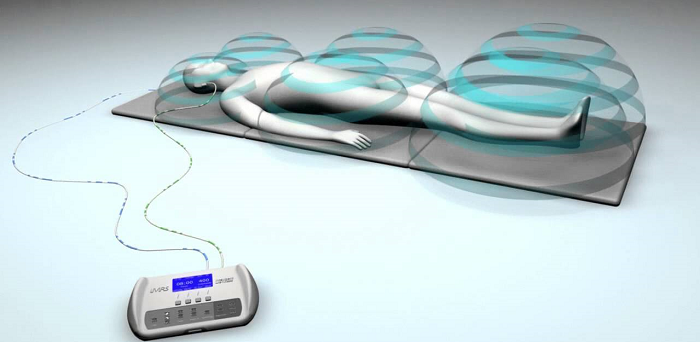Left Behind by Society: The Elderly Population and Challenges Faced with TeleHealth Cynthia Rando, CHFP; Jennifer Fogarty, PhD; Raquel Garcia, AHFP
Abstract
The arrival of the pandemic in 2019 and 2020 brought about significant changes in healthcare. The expansion and increased adoption of telehealth modalities focused on remote patient monitoring allowed healthcare professionals to minimize the transmission of the COVID 19 virus while maintaining critical aspects of patient care. These technologies, although beneficial to solving the remote health care challenge, introduced new challenges for some patient populations. Arguably, younger user segments are more familiar with rapidly advancing technology and experience an ease with its incorporation into their daily lives. However, this rapid change and broader use of technology in healthcare settings may challenge some generations due to general lack of exposure, dependence, and desire to incorporate these technologies into their everyday lives. Introducing a risk that a generation may be left behind and unable or unwilling to participate in their remote monitoring care despite the benefits. Failing to take into consideration the largest population in the U.S. wit the most numerous and severe health issues within the design process has left the elderly struggling to catch up with today’s technology driven approach to home healthcare. Companies, engineers, product designers, and anyone involved in the design process needs to understand the needs, capabilities and limitations of this user population in order to design and deliver meaningful and effective medical care programs and supporting technologies. Using a case study approach with an at-home wearable medical device technology developed to answer this populations’ healthcare monitoring needs, we illustrate the struggles that the elderly faced when interacting with a remote monitoring technology.
Case Study
Sophic Synergistics, LLC., provided human factors design and testing guidance to a small biotechnology firm in support of the development of an at-home wearable wrist worn device that monitors heart rate data for abnormal rhythms. The objective of the technology was to provide a safe alternative to in-office visits, allowing doctors to remotely monitor their patients heart rhythm data daily. This Software as a Medical Device application was integrated into an existing commercial off the shelf Samsung smartwatch device. The user evaluations were conducted to support Formative and Summative testing efforts in pursuit of FDA regulatory clearance. The scenarios focused on the following user actions with key product interactions points including:
- Initial unboxing
- Product/Packaging Instructions
- Physical product design and initial use
- Program and software utilization/interface interactions
- Clarity of operations and understanding of tasks
Results
A total of 12 participants, ages 61 to 90 were involved in this study. When interacting with packaging 5 participants (42%) failed to located all charging components and 7 participants (58%) successfully located all charging components. When interacting with the physical products design 9 participants (75%) struggled with placing watch on wrist and powering ‘on’ the watch and 3 participants (25%) placed watch on wrist with little to no issue. When interacting with the watch touchscreen interface 4 participants (33%) failed to perform a manual recording of their heart rhythm data, 2 participants (17%) needed assistance with manual recording, and 6 participants (50%) successfully completed the manual recording with little to no issues.
Significance
The standard number of users for completion of a Summative evaluation is 15 per user group. Although 15 participants were initially recruited, the data provided by the first 12 participants indicated that there were significant issues that remained unresolved with the design, leading to unnecessary stress during the evaluations and required the cancellation of the remaining participant sessions. This required another design iteration of the product and definition of the approach to use with this user population. Focusing on the problems identifies from the 12 participants within the evaluation:
Understanding the Elderly (ages 61-90)
- Consideration of deteriorating health conditions and associated impacts (i.e., tissue and nerve-related health issues such as arthritis and carpal tunnel) – due to arthritis and carpal tunnel of the fingers and hands some participants were unable to affix the strap to their own wrists or adequately press the crown.
- Clarity and understanding of use and training – the only ‘formal’ training received by participants was a simulated doctor’s visit training provided by the test administrators. Once the ‘at-home’ portion of the evaluations began, many participants noted that they had forgotten most of the training they received from the faux doctor.
- Expectations – elderly users want to know the “WHY” when interacting with technology and the benefits they will receive upon interaction.
The outcomes of this study demonstrate that an approach to technology development that places the burden on the user to advance their understanding past their experiences and capabilities is not a reasonable solution that will result in successful adoption by this target population. To address the issue of leaving the elderly behind it is important to understand how their health, physical and cognitive limitations and expectations shape their interactions. Acknowledging that telehealth solutions are only expanding, we need to focus more on this target population as the basis for the design.
References
Innovations, C. (n.d.). What Is Telehealth? What IS Remote Patient Monitoring? How Are They Different? Retrieved from https://news.careinnovation.com/blog/what-is-telehealth-what-isremote-patient-monitoring-how-are-they-different
Organization for Economic Co-operation and Development. (n.d.). Elderly Population. https://data.oecd.org/pop/elderly-population.htm Smith, S. (2016, February 11).
10 Common Elderly Health Issues. Vital Record News from Texas A&M Health. https://vitalrecord.tamhsc.edu/10-common-elderly-health-issues/ Vaportzis E, Giatsi Clausen < and Gow AJ (2017).
Older Adults Perceptions of Technology and Barriers to Interacting with Tablet Computers: A Focus Group Study. Frontiers in Psychology 8, 1687. doi: 10.3389/fpsyg.2017.01687 Weigel, G.. Ramaswamy A., Sobel, L. Salganicoff, A., Cubanski, J., and Freed, M. (2020, May 11).
Opportunities and Barriers for Telemedicine in the U.S. During the COVID-19 Emergency and Beyond. KFF. https://www.kff.org/womens-health-policy/issue-brief/opportunities-and-barriers-for-telemedicine-in-the-u-s-during-the-covid-19-emergency-and-beyond/






